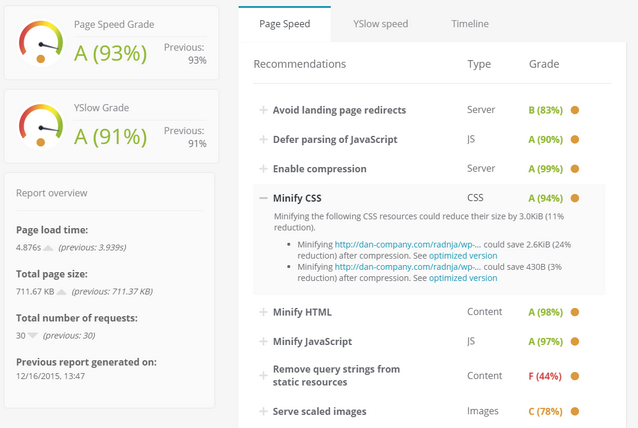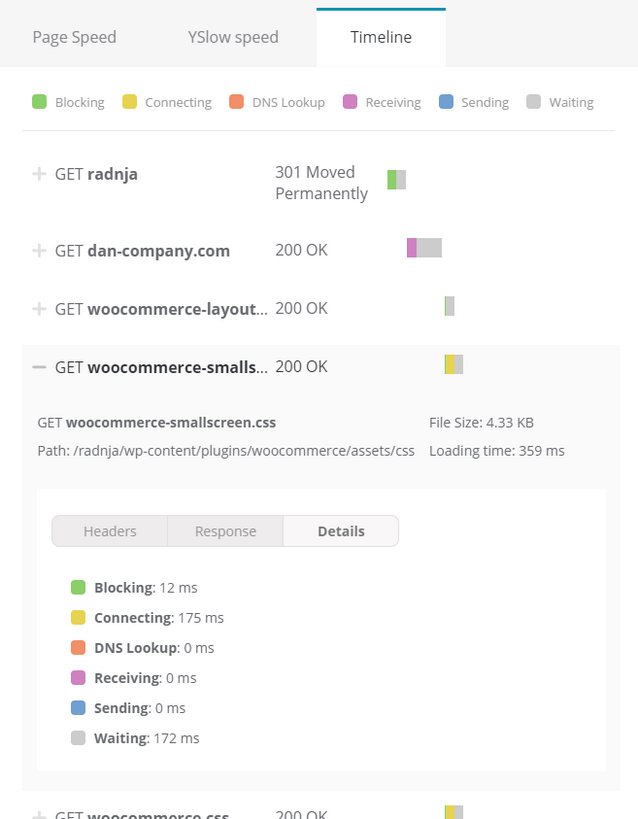
A four second delay on your website can slash the number of visits by half. We experienced this first-hand a year ago. And it’s not just us; the web is full of articles on this subject, like the case study on Unbounce that discovered that a 2-second delay at any single step of a 5-step transaction increased the abandonment rate by up to 60%.
Unlike malware, that’s easily detected with tools like our our security check, performance drops are much harder to detect and require constant attention.
You need to be proactive and vigilant. That’s why we decided to help by building the performance check for Orion.
Orion Performance Check

If you’re already a ManageWP user, you know how this tool works: the performance check runs the analysis using the Google PageSpeed and Yahoo! YSlow ruleset. It gives you an overall grade, as well as the breakdown of the factors that affect your website speed. For each element you get a recommendation how to improve your score.
Another great feature is the timeline of the requests and responses. Get into the gritty details and figure out how to fix the website speed.

..or just nod your head thoughtfully, without any idea how to fix it – like the rest of us.
What Are the Improvements Over the Classic ManageWP Check?
Your performance scan results are now being stored and compared. Having a history of speed grades is great if you’re testing a new plugin, and want to know if it will affect the website performance. In fact, the report overview shows how the check compares to the previous one, so you could keep tabs on the performance at a glance.
The performance scan will also be included in the client report after the holidays. You’ll be able show it to your clients, and create greater value for them.
(Update: as of January 15 the client report integration is available to all Orion users)
Just like with the security check, after the current Orion roadmap is done, we plan on introducing a fully automated performance check.
Imagine this scenario:
You’ve got a website you’re running for a client. You want to make sure it’s running at peak performance, so you turn on a daily performance check. To avoid a lot of false alerts, you set a notification threshold at 90 – if a check gets a grade below this figure, you’ll receive an email with more information.
You will be happy because you are able to solve issues before your clients have the chance to scream at you over the phone. Your clients will be ecstatic, knowing that their websites are in the right hands.
If you have any ideas how we could further improve the performance check, let us know in the comments below.

David Cohn
Do you have a managewp guide to troubleshooting and improving performance?
We put together the following on our blog. We are using it internally as a short guide to getting large improvements quickly: WordPress Site Performance Improvement Guide
sylvester
Is it (or will it) be possible to set the test server’s location for each site? Some of my client sites are local (eg. Singapore) and they’re mostly concerned with loading speeds for local users.
Nemanja Aleksic
It’s a pretty good idea. The current performance check is done from the servers in Canada, which is pretty great anyway since you can track the change over time, but running the check from an Asian server would give you a more realistic performance benchmark.
Our product team will look into this to see how hard would it be to implement it.
Milos
Samo registration pop out odlepite od dna ekrana. X dugme sa close eventualno gore staviti 🙂
Spremam se da isprobam tool
Nemanja Aleksic
To se desi kad uradimo deploy nekoliko sati pre premijere The Force Awakens 🙂
Biće sređeno, hvala što si nam skrenuo pažnju.
Milos
hehe. zovu me oko sokolovo…